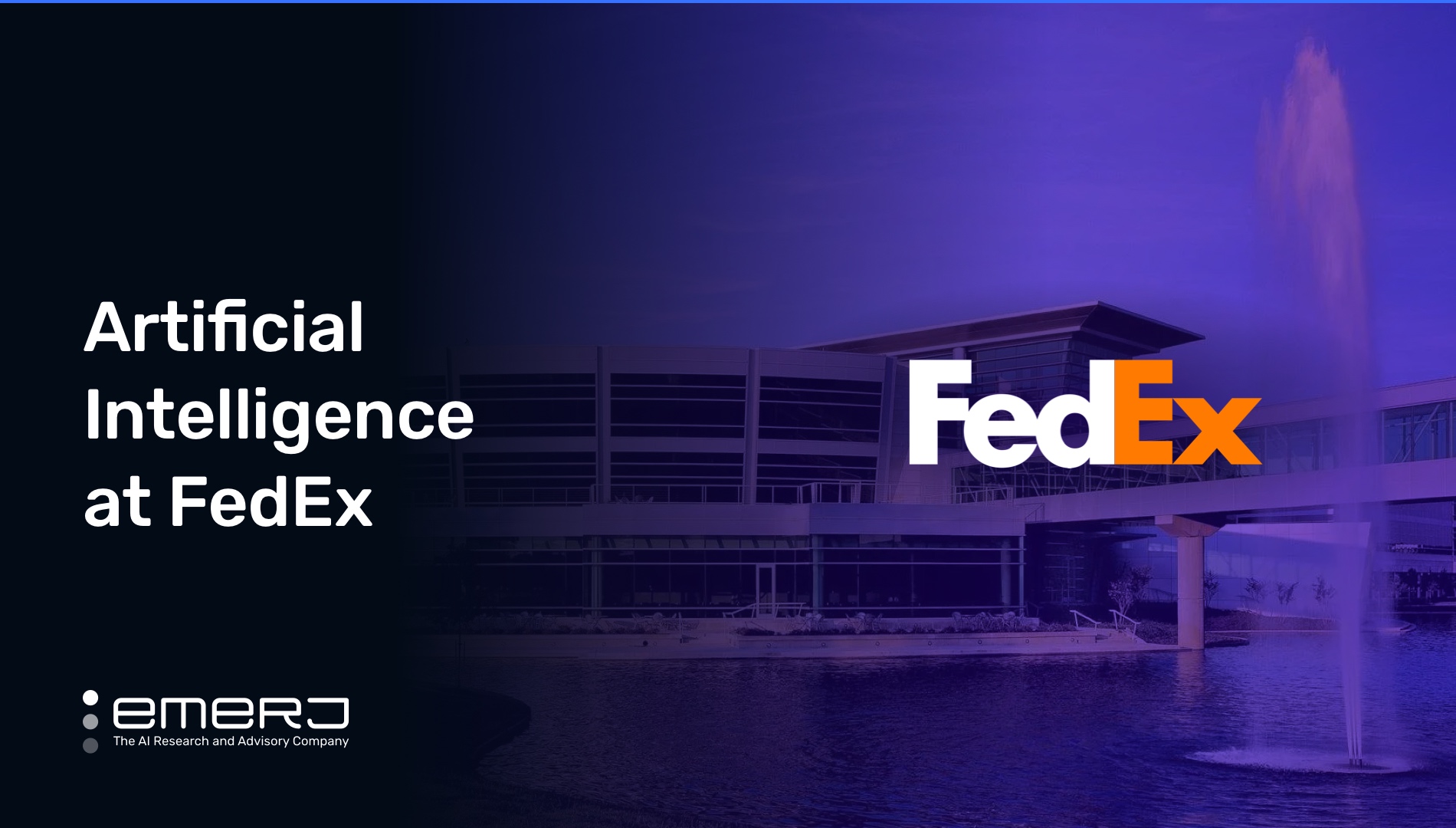
Federal Express, or simply ‘FedEx,’ is an American multinational conglomerate shipping and logistics company founded and based in Memphis, Tennessee. The company is perhaps best known for its flagship FedEx Express service, which the company claims “invested express transportation.”
FedEx reports annual revenue of $94 billion and employs 550,000 workers globally. The company is traded on the NYSE (Symbol: FDX) and has a market capitalization of $56.5 billion.
Regarding AI strategy, the company doesn’t say much, with the exception of headline-catching projects, including an AI-powered sorting robot and a package delivery drone. A LinkedIn search for “FedEx + data scientist” currently yields 615 results as of the writing of this article.
In this brief primer, we intend to examine two use cases showing how AI initiatives currently support FedEx’s business goals:
- Delivery Optimization: FedEx combines near-real-time data and predictive models to help companies optimize high-value package delivery.
- Robotic Delivery Navigation: FedEx utilizes machine learning capabilities to enable its same-day delivery robot to detect and adjust for obstacles en route.
We’ll begin by examining how FedEx uses AI to assist companies with optimizing the delivery of high-value packages.
Use Case #1: Delivery Optimization for Sensitive Packages
When it comes to high-value, time-sensitive items, businesses sometimes require specialized delivery services. On their webpage, FedEx gives examples of a medical supplier sending a critical package that may save a patient’s life or an integral assembly line component needed to prevent a shutdown of said line.
To develop a solution that could handle evolving customer demands and provide businesses with enhanced visibility into its supply chain, FedEx collaborated with Microsoft to create a new package analytics system. The new solution would be called FedEx Surround.
The following four-minute CNBC clip from the announcement of the partnership discusses the initial business impact of FedEx and Microsoft’s joint venture, scrutinizing how the companies did not initially announce a dollar value for the deal:
(Source: CNBC Television)
The company states that the system was designed to “provide near-real-time insights – down to the granular level of ZIP code of example – to shine a light on the progress and movement of physical inventory.” The service is meant mainly for companies dependent on highly time-sensitive deliveries.
In a joint announcement from Microsoft and FedEx announcing a new partnership designed to train the system, FedEx explains how it used data gathered from packages via sensors and barcodes. Sensor data appears to be collected from FedEx’s proprietary SenseAware ID technology. According to the company’s advertising, the hardware can capture environmental data, including location, temperature, light exposure, relative humidity, shock levels, and barometric pressure.
Customers are also provided with external data such as severe weather or natural disaster alerts, mechanical delays of transport vehicles, clearance and customs difficulties, and incorrect address information via a cloud platform. That data provides the business customer with actionable insights to take corrective action if need be. It also serves as input data that are fed into the ML algorithm.
All internal and external data points are analyzed using a predictive model in Microsoft Azure. The company claims that the software performs two workflow-related functions:
- Provides actionable, real-time shipment data, enabling FedEx Surround customers to “intervene early” and execute the necessary business actions to mitigate potential fallout.
- Uses predictive analytic models to analyze past trends and identify future opportunities for more streamlined shipping.
First deployed in December 2020, the solution gained some recognition as Surround, along with SenseAware, appears to have been instrumental in delivering COVID-19 vaccines overseas. The company seems to imply Surround’s value here given the time-sensitive nature of COVID vaccines.
FedEx claims on its webpage that it was able to deliver over 700,000 vaccines in six months to troops overseas after being summoned by the federal government.
Use Case #2: Robotic Delivery Navigation
Roxo is FedEx’s same-day delivery robot that the company advertises was designed for “reliable, autonomous, last-mile delivery” and can be utilized within a three-to-five mile radius of the retailer’s location.
Per the company’s 2021 annual report, Roxo is designed to handle “some of those costly and time-consuming last-mile deliveries” while human drivers focus on more high-value and high-volume shipment routes.
One of the challenges that engineers face when designing an autonomous robot is teaching it to detect road landmarks (e.g., traffic lights, signs, etc.) and maneuver around obstacles. The device must be able to see what it is doing and react accordingly.
To solve the problem, FedEx reports that it trained machine learning algorithms with a massive amount of data from 20 sensors “from radar to cameras.” The data was used to develop camera software that enabled the robot to detect the speed of objects such as walking pedestrians and assist the robot with making perception decisions, such as when to turn right or left.
The following video of approximately two minutes provides an overview of the software capabilities of Roxo:
Computer vision allows the machine to detect and recognize obstacles such as road landmarks. Currently, Roxo is supervised by human teleoperators – workers who can take control of the robot – “at all times.” The company states that if a problem arises wherein the required solution is not trained into the robot’s algorithms, the device will come to a stop until the teleoperator or another expert can resolve the issue.
Regarding tangible outcomes of the technology, there’s very little evidence of traction. The words “testing” and “future” appear multiple times in company communications about the robot. While it is to be expected for autonomous technology, FedEx has repeatedly and consistently trumpeted Roxo in its annual reports, website, and social media while having little to show for it in the way of results.
According to FedEx’s 2021 annual report, Roxo is approved to operate in more than 12 U.S. states as a direct result of the AI technology inside. The company claims that developing the robot has allowed the company’s drivers to focus their attention on routes that are more high-value and high-volume, but provides no evidence or data.







